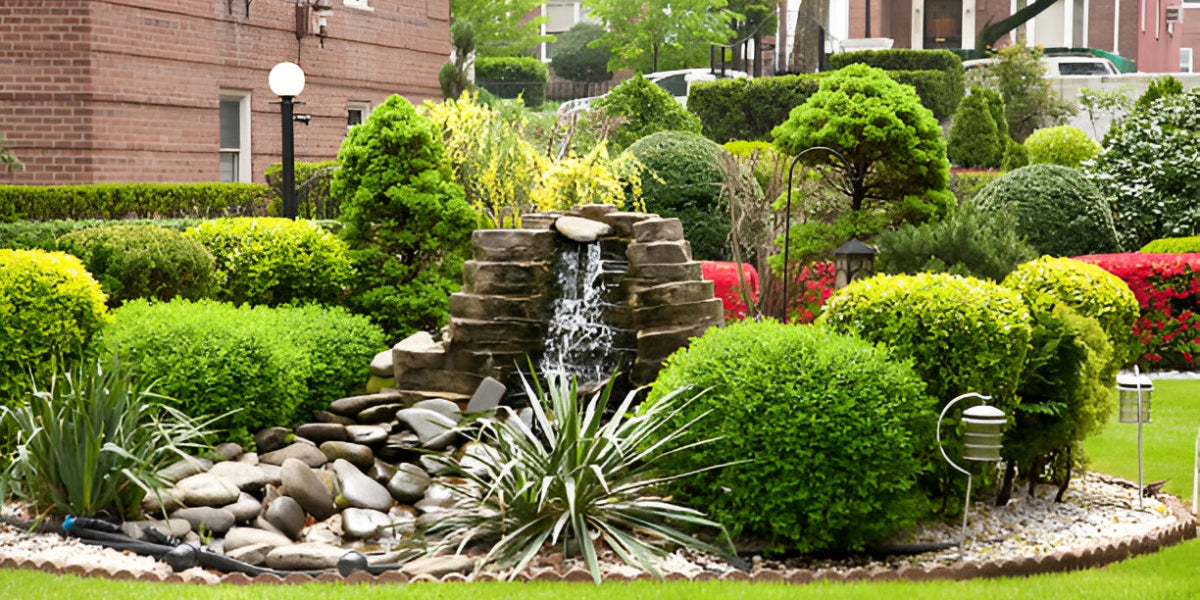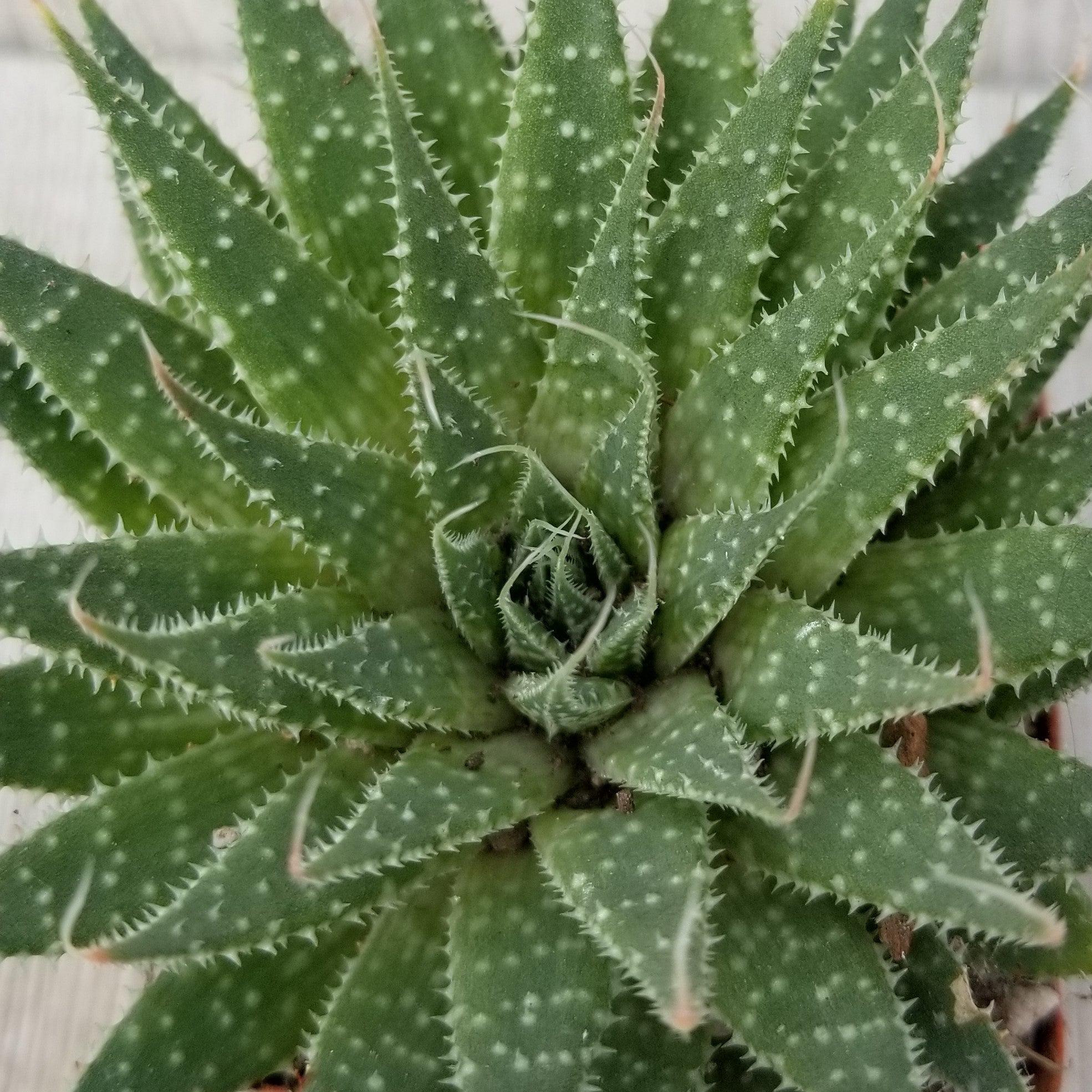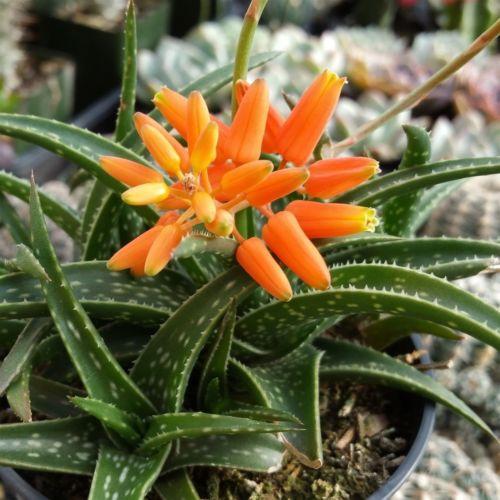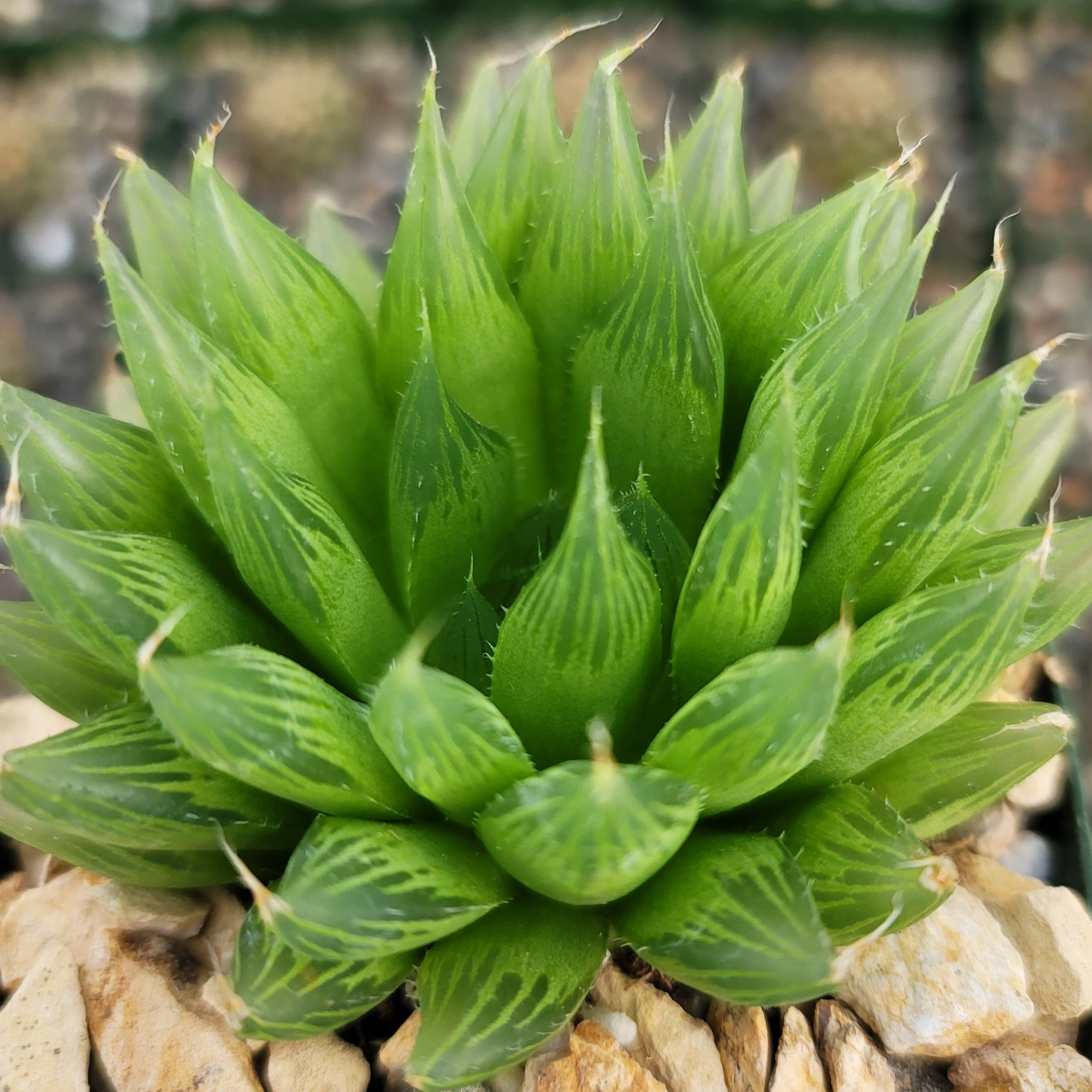Succulents vs. Cacti: What's the Difference?
Updated: January 28, 2025

While all cacti are considered to be succulents, there are some succulents that are not cacti. When it comes to succulents and cacti, they may seem similar at first glance, but there are some key distinctions that set them apart. Learning how the two are related will make it easier to identify them and make a proper distinction between them.
Cacti and succulents are closely related, with cacti representing the botanical family 'Cactaceae' and succulents referring to various plant types included in several plant families.
In this blog article, we'll take you through everything you need to know about differences, similarities, care, and maintenance for Succulents and Cacti. To determine if a succulent is a cactus or to learn the differences between these two plants, read on.
Is a Cactus a Succulent?
Most of the time, when we think of cacti, we imagine these plants to be full of spines with no leaves or stems. This is only partially correct. There are both cacti with and without spines. Cacti are succulents with fleshy stems that store water. A succulent is considered to be a cactus when it features areoles. Areoles are tiny, round bumps present on the surface of cacti. Leaves, hair, and spines grow out of these small bumps. Cactus plants originate in deserts throughout the West Indies and Central America.

What is a succulent plant?
With over 60 different plant families, succulents are known for their unique characteristics and impressive ability to store water. Succulents, originating from the Latin 'Sucus' meaning juice or sap, are found in dry, arid climates where they rely on dew and mist for survival, relying on infrequent rainfall.

One of the defining features of succulents is their thick, fleshy leaves or stems.
These structures are specially adapted to retain water, allowing succulents to survive in arid environments with limited rainfall.
The leaves of succulents are typically thick and waxy, which helps to reduce water loss through evaporation.
This adaptation enables succulents to thrive in dry conditions where other plants may struggle.
Additionally, some succulents have specialized structures called water-storing tissues, such as leaves or stems, that can hold a significant amount of water.
These water storage capabilities allow succulent plants to survive prolonged periods of drought. These drought-resistant succulents store water, absorb excess moisture during periods of rainfall or high humidity, and then slowly release it when water is scarce. This adaptation helps outdoor and indoor succulent plants maintain their overall health and vitality, even in challenging environments. Succulents come in a wide array of diverse and popular varieties.
Popular Types of Succulent Plants

Echeveria
These rosette-shaped succulents come in various colors, such as green, purple, and blue, and have beautiful, fleshy leaves.

Aloe Vera
Aloe Vera is known for its medicinal properties, Aloe Vera has spiky leaves that contain a gel-like substance used for skin care and soothing burns.

Sedum
This versatile Sedum succulent has a variety of forms, from trailing or hanging succulent plant varieties like Donkey tail or Burro's Tail to upright varieties like Pink Jellybean that you can easily grow in succulent planters.

Haworthia
These small succulents have distinctive, textured leaves and come in various shapes and patterns, making them a favorite among collectors.

Crassula
It is known as Jade Plants, and have thick, oval-shaped leaves and are often grown as houseplants or bonsai.
Senecio
The Senecio with its popular String of Pearls and String of Fishhooks, are mostly trailing succulents with unique bead-like leaves.
Explore over 500 varieties of succulents here at Planet Desert. With our wide selection, you're sure to find the perfect plant for your home or garden.
What is a Cactus?
Cacti (a plural of Cactus) are a specific group of succulents that have evolved unique adaptations to survive in harsh desert environments. One of these features is their spines, which are actually modified leaves. These spines are like sharp needles that grow from cactus plants. Spines serve multiple purposes, including protecting the cactus from predators and reducing water loss. They also provide shade, which helps the cactus stay cool under the scorching desert sun.
Another interesting feature of cacti is the presence of areoles.
Areoles are small, specialized cushion-like structures found on cactus plants where spines, flowers, and new growth emerge. They act as the cactus's "growth points" and play a crucial role in its development.
Areoles can produce new spines, flowers, or even branches, allowing the cactus to adapt and grow in its harsh desert environment.
In terms of desert adaptation, cacti are xeriscape and low-maintenance plants that have evolved several strategies to survive in arid conditions. One of the most notable adaptations is their ability to store water.

Cactus plants have thick, fleshy stems that act as water reservoirs, allowing them to endure long periods without rainfall. Additionally, these drought-tolerant plants have a unique form of photosynthesis called CAM (Crassulacean Acid Metabolism), which allows them to open their stomata at night to minimize water loss through transpiration. Cacti come in a wide variety of popular and diverse types.
Popular Types of Cactus Plants

Golden Barrel Cactus
This round and spiky cactus is known for its golden-yellow color and can grow to be quite large.

Bunny Ear Cactus
Also known as Opuntia microdasys, this cactus has flat, paddle-like pads that resemble bunny ears. It's a stunning and easy-to-care-for variety.

Christmas Cactus
This cactus blooms with vibrant flowers around the holiday season, making it a festive and popular choice.

Saguaro Cactus
The iconic symbol of the desert, the Saguaro cactus can grow to be incredibly tall and has distinctive arm-like branches.

Bishop's Cap Cactus
This cactus, also called Astrophytum myriostigma, has a unique star-shaped pattern on its surface, resembling a bishop's cap.

Fishhook Cactus
As the name suggests, this cactus has curved spines that resemble fishhooks. It's a small and interesting variety.
Explore over 500 varieties of cactus here at Planet Desert. With our wide selection, you're sure to find the perfect plant for your home or garden.
Flowering Habits of Succulents and Cacti
When comparing the blooms of succulents and cactus plants, there are some interesting differences to note. While both succulents and cacti can produce beautiful flowers, there are a few distinctions between their blooming habits.
Succulents, which include a wide variety of flowering succulent plants like Aeonium, Kalanchoe, and Euphorbia, often have showy and colorful flowers. These blooms can come in a range of hues, from vibrant pinks and purples to soft pastels and even bright yellows. Succulent flowers tend to be more diverse in shape and size, with some resembling clusters of tiny flowers while others have larger, more intricate blossoms.
On the other hand, flowering cactus plants often have a more distinct and unique appearance. Cacti flowers tend to be tubular or bell-shaped, with many flowering cactus species like Mammillaria, Prickly pear, and Rebutia (Crown Cactus) producing large, eye-catching blooms. While succulent flowers can be found throughout the year, cacti blooms are often more seasonal, with many species flowering during specific times of the year, often in response to environmental cues like temperature or rainfall.

Both succulent and cactus blooms are often pollinated by insects, attracting bees, butterflies, and other pollinators with their vibrant colors and sweet nectar. The blooms of both succulents and cacti can add a delightful touch to these plants' already captivating and unique appearances.
So, while succulents and cacti may have some differences in their blooming habits, both groups offer a stunning array of flowers that can bring beauty and charm to any garden or indoor space.
Cacti and Succulents Care for Beginners
When it comes to cacti and succulent plant care, it is relatively easy, and they have similar care requirements. Here are some general tips for their care and maintenance:
- Cacti and succulents can withstand full sun, but they prefer bright indirect light. Plant cactus and succulents near a sunny window or in a well-lit area. However, be cautious of intense, direct sunlight, as it can scorch their leaves.
- Both succulents and cacti are adapted to arid environments, so they have low water needs. Allow the soil to dry out completely between waterings. It's better to be underwater than over-water cacti and succulents. A clay pot is recommended with a hole in the bottom that is covered with rocks or broken clay pieces. Be mindful of the specific watering needs of each species, as they can vary.
- Well-draining soil is essential for succulents and cacti. Use a specialized succulent and cactus mix or create your own by adding perlite or pumice to regular potting soil.
- Most succulents and cacti prefer warm temperatures between 60 and 80°F. Protect them from extreme cold or frost, as it can damage or kill them. Plant your succulent indoors if you live in cold areas with freezing temperatures. You can also check our winter care tips for succulent plants. Succulents and cacti are generally warm-hardy, but some are cold-hardy, like the popular hens and chicks succulent, which grows in USDA plant hardiness zones 3–11. Prickly pear cacti can thrive in various climates within zones 4–10.

- Succulent cactus have low fertilizer requirements. Feed them with a balanced, natural fertilizer once a year during the actively growing season (spring). Avoid fertilizing during winter dormancy.
- Choose a pot with drainage holes to prevent waterlogged soil. Repot your succulents and cacti when they outgrow their containers or every few years to refresh the soil.
- Remove any dead or damaged leaves or stems from the parent plant to maintain the plant's health and aesthetics. Some succulents and cacti may also benefit from occasional shaping or trimming.
Remember, specific care needs can vary depending on the type of other succulents or cactus you have, so it's always a good idea to research the specific requirements of your cactus and succulent plant. With proper care and attention, your succulents and cacti will thrive and bring beauty to your space!
Quick Review: What's the Difference Between Cactus and Succulent?
Once you learn to identify a cactus and a succulent, the difference between the two can be easily understood. Cacti and succulents may have contrasting adaptations to cope with their environments. Let’s go through a list of differences that would make the concept simpler.

Physical Features
A cactus has various physical features that make it different from a succulent. Cacti are identified by their needle-like spines. They have fleshy stems that store water and are capable of performing photosynthesis. A succulent plant, on the other hand, holds water and nutrients in its fleshy leaves. Most cactus plants do not have leaves, but some of them do. Additionally, cacti form small white bumps on their surface called areoles. Succulents don’t have areoles. This is the main characteristic that makes the two different from each other. A plant without areoles is a succulent.
Flowering
Both succulents and cacti bloom. However, the flowers of cactus plants are brighter, larger in size, and have complex structures as compared to the flowers of succulents. Cactus blooms are pollinated by bees, butterflies, and bats. The flowers of succulents are simple and small in size, usually pollinated by bees.
Fruit Production
Although both succulents and cacti flowers, only cactus plants can grow fruits. The most commonly known cactus fruits are dragon fruit and prickly pear fruit.
Propagation
Propagation is the process in which an element of the parent plant is used to grow baby plants. This easy method helps in expanding plant collections without the need to buy new ones. Cacti are propagated by seeds and offsets. Succulents are most often propagated from stem and leaf cuttings.
First impression
The look of cacti is determined by their waxy stems. On the contrary, the look of succulents can be identified by the arrangement and shape of their leaves. In terms of appearance, succulents come in a wide variety of forms, including rosettes, trailing vines, and compact clusters. Cacti, on the other hand, often have a more distinct and recognizable shape, with columnar, globular, or cylindrical stems.

With many differences between cacti and succulents, still, both of them are perfect choices to add a little sophistication to your home décor.
Cacti and Succulents are the Best Choice for Drought Resistant Gardening
Cacti and succulents are excellent choices for xeriscape landscaping! Their ability to store water in their leaves or stems allows them to thrive in dry and arid conditions with minimal watering. They are well-suited for xeriscaping because they can withstand drought and require less water compared to other plants. Their unique adaptations make them perfect for creating water-efficient and low-maintenance landscapes.
Factors to Consider - Choosing the Right Plant
Both succulents and cacti are beautiful and resilient xeriscape plants that can thrive in various environments. Consider these factors and choose the plants that best fit your preferences and the conditions in your space. When choosing between succulents and cacti, there are a few factors to consider:
1- Light Requirements: Both succulents and cacti thrive in bright light, but some varieties may have specific light preferences. Consider the lighting conditions in your space and choose plants that will be happy there.
2- Watering Needs: While both succulents and cacti are drought-tolerant plants, their watering requirements can vary. Some succulents prefer more frequent watering, while cacti generally require less water. Think about how often you're able to water your plants and choose accordingly.

3- Size and Growth Habit: Consider the mature size and growth habit of the plants. Some succulents, like trailing varieties, may be better suited for hanging baskets or cascading over edges. Cacti, with their unique shapes and sizes, can be a focal point in your garden or indoor collection.
4- Care and Maintenance: Different plants have different care needs. Some succulents may be more forgiving if you forget to water them occasionally, while most cacti may require more specialized care. Consider your level of experience and the amount of time you can dedicate to plant care.
5- Aesthetics: Ultimately, choose plants that you find visually appealing. Succulents come in a wide range of colors, shapes, and textures, while cacti offer unique and striking forms. Think about the overall look and feel you want to achieve with your plant collection.
Where to Buy Cactus and Succulents?
When it comes to buying Cacti and succulents, unless you have a local nursery that specializes in cactus and succulents; then you may have a hard time finding them near you.
Most of the types of cacti and succulents Plants listed above are all available at Planet Desert. You can just click the buy link on any of the plants on our list above, or feel free to explore more plants here.
We have the world's largest selection of Cactus & Succulents that can be shipped anywhere in the United States and are guaranteed to arrive happy & healthy.
Final Thoughts
Overall, succulents and cacti are both types of plants that have adapted to survive in arid environments. While all cacti are succulents, not all succulents are cacti. Succulents are known for their fleshy leaves, stems, or roots that store water, allowing them to withstand drought conditions.
Cacti, on the other hand, are a specific group of succulents that have unique features like spines and areoles and often have a distinctive cylindrical or globular shape. Both succulents and cacti are popular choices for indoor and outdoor gardens because of their low maintenance requirements and unique appearances.
Cactus & succulents are your best choice for creating drought-resistant gardens. They are a fascinating group of plants, combining the defining features and spines of cacti with the water-storing abilities of succulents. With so many facts and details provided, we hope this post will be helpful to you in some way. So whether you're into the spiky charm of cacti or the diverse beauty of succulents, both can bring a touch of nature to your space! Give these wonderful houseplants a try!
Also, don't forget to check out our other blogs to expand your knowledge of this wonderful hobby.
Frequently Asked Questions
Yes, cacti can indeed be flowering plants! Many species of cacti produce beautiful and vibrant flowers. The flowers of cacti come in various shapes, sizes, and colors, adding to the overall charm of these unique plants.
So, not only do cacti have interesting shapes and spines, but they can also surprise you with their stunning blooms!
To identify cacti and succulents, look for plants with fleshy, thick leaves or stems. Cacti often have spines or prickles, while succulents can have smooth leaves or unique textures.
Both types of plants are known for their ability to store water, so they may have plump or swollen parts. Observing these characteristics can help you identify cacti and succulents.
No, succulents and cacti are not the same thing, but they are related! While all cacti are succulents, not all succulents are cacti. Succulents are a broad category of plants that have the ability to store water in their leaves, stems, or roots.
Cacti are a specific group of succulents that have unique adaptations like spines and often a cylindrical or globular shape. So, think of cacti as a special type of succulent with their own distinct characteristics.
Cactus succulents have special adaptations for desert survival, like storing water in their fleshy stems and spines. These unique features help them thrive in arid environments.
Yes, you can definitely keep cacti and other succulents together! They both require similar care, such as well-drained soil and infrequent watering. Just make sure to group them based on their specific light and water needs.
Some succulents and cacti may look similar due to convergent evolution. Convergent evolution, a type of evolution where genetically unrelated plants and animals develop similar traits, is responsible for the similarities between Succulents and cacti.
Cacti, native to deserts in the Americas, face similar environmental challenges like arid climates and thirsty predators. Succulents, like cacti, have developed adaptations to cope with these conditions.






















